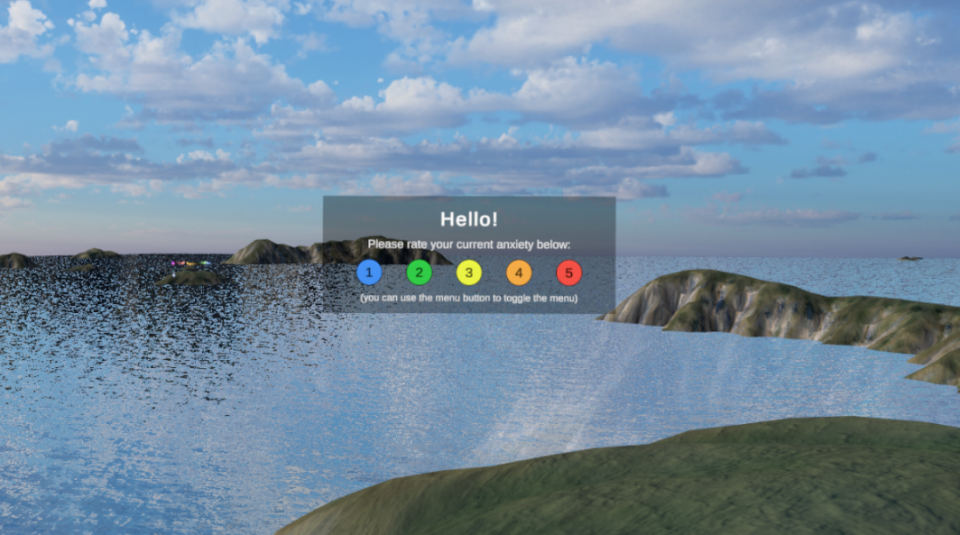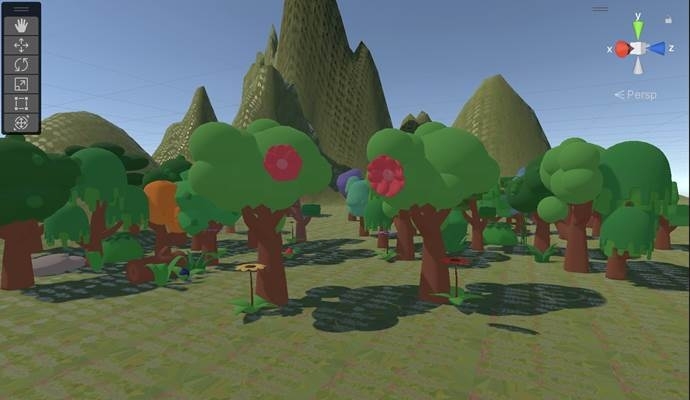
Students use VR, AR to create ‘Apps for Good’
By
—
What if you were afraid of water and your friends kept bugging you to just get in? If there was an affordable and easy way to overcome your fear of water using a virtual reality headset, would you try it?
In 2021, over 1,700 cases of West Nile virus were reported in Arizona. What if students could harness the power of artificial intelligence and the engagement afforded by augmented reality on phones to learn how to eradicate mosquito breeding grounds in their neighborhoods, potentially decreasing incidences of the virus?
What about making it easier for people with physical disabilities to navigate in VR-digitized environments?
Six students in Barrett, The Honors College at Arizona State University are creatively being positive changemakers and addressing these vital questions by designing “apps for good.” The students began their projects last year as participants in an honors thesis cohort called “XR for Good” with Mina Johnson-Glenberg, associate research professor in the ASU Department of Psychology.
Students were tasked with choosing a topic and creating their own project using a tool in the spectrum of extended realities, or XR, which includes augmented reality (AR), mixed reality (MR) and virtual reality (VR).
Based on their areas of interest, students created interactive content, such as applications or games, along the XR emerging technologies spectrum. No programming experience was necessary. Johnson-Glenberg connected students with faculty working in their areas of interest, mentored the students, and helped them access VR headsets and a suite of no-code editors.
“(The students) picked the topics that they care about and have passion for; I helped them refine their project ideas. I’m excited about the potential of these projects. They are all designed to address real issues in very creative, and sometimes fun, ways using XR,” Johnson-Glenberg said.
‘Apps for good’
Computer science major Mario Garcia is trying to make it easier for physically disabled people to navigate in virtual reality by creating an interface to help them use computers in ways that best suit their needs.
After consulting and play-testing with a person with cerebral palsy on the design and function of his app, Garcia created a 3D-printed controller that straps onto the hand and wrist so a user of the application can access their computer through VR, simulate typing and mouse movements, create and edit documents, making for a more comfortable and meaningful experience.
“I ultimately wanted the user to be able to do whatever is most comfortable for them. … For example, if they want to make certain keys bigger or smaller, if they want more vertical or horizontal spacing, if they want to change it so that the keys are red, that’s all allowed (in the application). There are a lot of options,” Garcia said.
He hopes to make the app accessible on GitHub, an online repository, to get feedback on its design and functionality.

Kiera Feng's Project Aquaphobia gamifies exposure therapy as users slowly submerge themselves in a lake. Image courtesy Kiera Feng
Kiera Feng, a senior computer science major, created a VR app to help people overcome their fear of water. Called Project Aquaphobia, the app gamifies exposure therapy as users slowly submerge themselves in a lake. She is now working to perfect the design and hopes to publish it as an open source for people to use for free. Her consultant for the project was Armando Pina, ASU associate professor of psychology.
Aarushi Bharti, who graduated in May with a bachelor’s degree in technological entrepreneurship and management and a certificate in informatics, worked with Silvie Huijben, assistant professor in the ASU School of Life Sciences, Pavan Turaga, director of the ASU School of Arts, Media and Engineering, and the ASU Department of Psychology on an AR game called "Skeeter Breeder,” focused on mosquito eradication.
Bharti led a study to assess the efficacy of her mobile game app in which 34 elementary school children took photos of potential mosquito breeding sites in their schoolyard and submitted them to the app’s original machine learning (AI) algorithm. Bharti said the study found potential for the game to impact students’ knowledge and help them identify and eliminate possible mosquito breeding grounds, thus helping to reduce the spread of mosquito-borne diseases.
“I learned that XR can be used in any field to positively benefit society as a whole. Also, I learned there are many technical and nontechnical skills needed for this type of research. For example, designing an UI interface, coding the game, testing the game, developing a research study, getting IRB clearance, analyzing the results, and more is needed to make an educational game for a research study,” she said.
Rachel Gringorten, who graduated in May with a bachelor’s degree in speech and hearing science, worked with Corianne Rogalsky, associate professor in the ASU College of Health Solutions, and Dr. Stephen English from the Mayo Clinic to design a VR game called PACT to aid people struggling with communication after a stroke, a condition called aphasia.
“One symptom of aphasia is anomia, or difficulty with word retrieval. The goal of my game is to help users with aphasia practice their word-finding and picture-naming abilities,” Gringorten said.

Lauren Hurley's VR game aims to assist people with exercise and balance issues by simulating a walk through a forest. Image courtesy Lauren Hurley
Lauren Hurley, a senior psychology major, created a VR game to assist people with degenerative disorders — specifically Parkinson's disease — with exercise and balance issues by simulating a walk through a forest where they pick fruit from trees and flowers or on a planet where they collect asteroids.
“Physical therapy can be routine and sometimes boring, and this game could change that. It could also help a physical therapist develop a baseline for how a patient is doing and gauge their progress,” Hurley said.
Hurley worked with David Coon, professor in the ASU Edson College of Nursing and Health Innovation, to focus on the areas of aging, caregiving and psychology in the game development. She hopes to conduct a focus group to get feedback on the game’s design and function and finish up the project this fall. She said a longer-term goal is to offer the game to physical therapy practices for use with patients.
Johnson-Glenberg will offer XR for Good to honors students again this year. Contact mina.johnson@asu.edu if you are a student interested in participating in XR for Good or if you want to be a project mentor.
